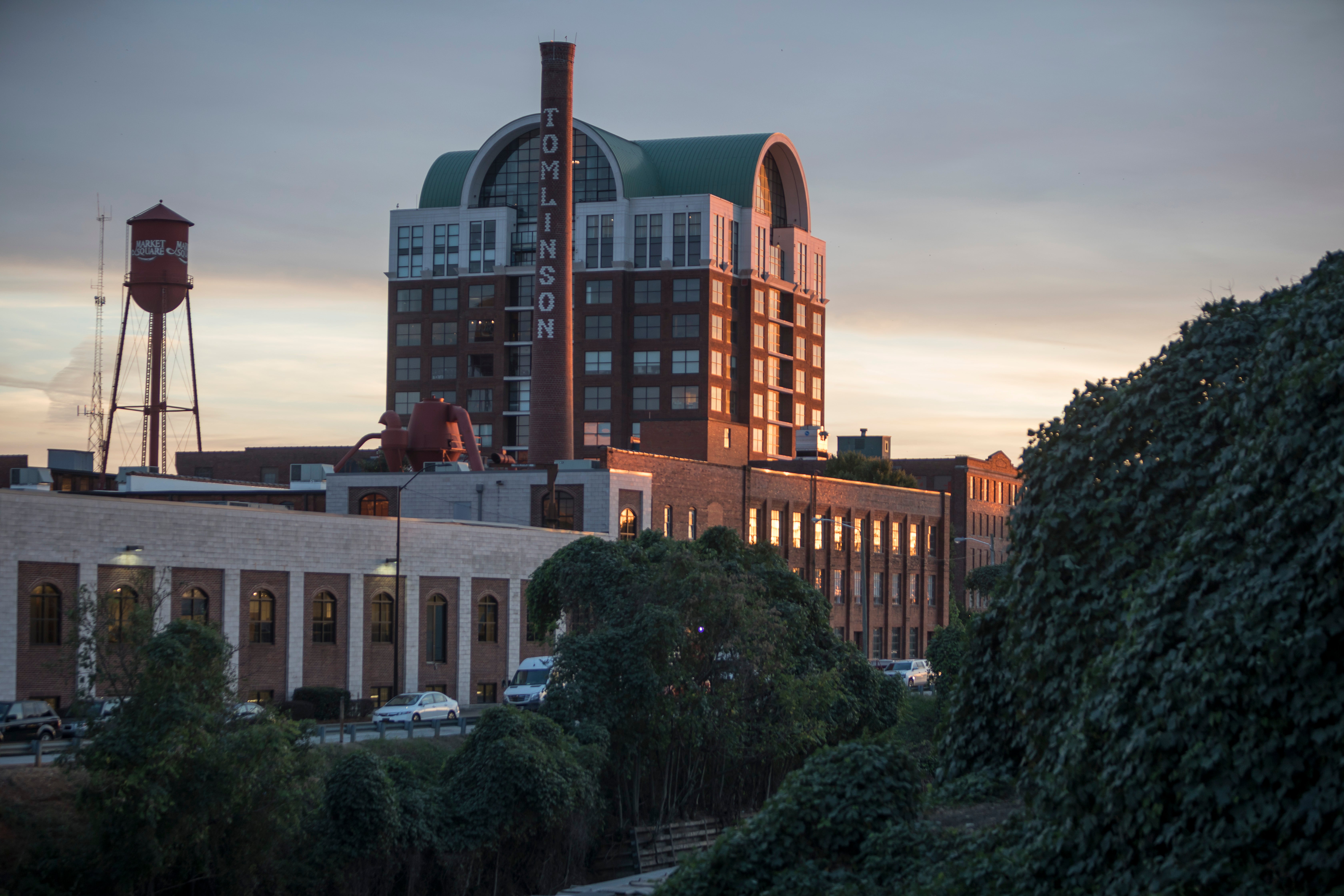Before the 10 million square feet of showroom space, or the more than 60,000 biannual visitors, or the furniture filling every nook and cranny, there was a town in North Carolina called High Point—and if you think you know all about it, think again.
John Joe Schlichtman’s book Showroom City: Real Estate and Resistance in the Furniture Capital of the World takes a look at High Point through a completely different lens. Yes, there’s furniture history, and if you’ve been going to markets there for more than a few seasons, you’ll no doubt recognize many of the people, places and things Schlichtman mentions. But chances are, you will be astounded by just how much you didn’t know, like how the city once had a thriving, prosperous African-American commercial district that existed in parallel with its white counterpart. Or how the downtown—now largely a ghost town, save for 10 to 12 days a year—was once a vibrant business and retail area equal to Greensboro’s and Winston-Salem’s, the other two cities in North Carolina’s so-called Triad region, and indeed to most in the entire state. Or how High Point had many opportunities to avoid its furniture-centric existence, but in virtually every case caved into the interests of the furniture manufacturers who paid the taxes that kept the city going.
As someone who has been attending markets in High Point for longer than I care to remember—my first was in 1978, and my more recent just a few months ago—all of this history was largely unknown to me. The High Point that once was does still exist, at least in some part, in the shadows of the big showroom buildings. But that history is largely ignored today by most marketgoers—myself very much included—on the way to the next appointment, a cheap parking spot and breakfast at Biscuitville.
And so, on the eve of this month’s High Point Market, when those tens of thousands of visitors will descend upon the hundreds of showrooms within the 55 square miles of town, Showroom City, which was published in June 2022, takes on special relevance. And if you can’t get through its entire 384 pages before your trip, the book makes for fascinating reading on the shuttle bus, waiting for your delayed flight at Piedmont Triad International Airport (that’s GSO), or bedtime perusing after you’ve seen one too many pieces of gray upholstery or midcentury modern coffee tables.
That Schlichtman, the author, is an associate professor of sociology at DePaul University in Chicago helps the reader understand the tome’s academic approach to High Point. The book’s flap copy explains that Schlichtman takes an “ethnographic lens” to his subject, meaning the study of human society through immersion in local culture and ways of life: “Showroom City is a story of exclusionary growth and unchecked development, of a city flailing to fill the void left by its dwindling factories. ... With great nuance, he delves deeply to reveal how power operates locally and how citizens may affirm, exploit, influence and resist the takeover of their community.”
The book is nicely written, although occasionally it does veer off into tangents that only a sociology professor would appreciate. And some more pictures, both historical and current, might help tell the story of the city a little more effectively.
But knowing how High Point’s past shaped its current state helps you understand and contextualize the city’s future—and how that could play out for the furniture industry. Despite decades spent narrowing its focus toward furniture, High Point has perhaps surprisingly recently undergone some expansion. The emergence of High Point University as a power within the city has been the biggest factor, but there has also been the development of a minor league baseball stadium and its resident team (go Rockers!), and the planned reopening this year of the dormant centerpiece hotel on Main Street as an Aiden hotel, Best Western’s mid- to high-end boutique brand. This property has had more names than Sean Combs (it was previously a Radisson, then a Red Lion), and its return will bring life back to what had become a serious eyesore in the heart of the city’s streetscape.
Also opening this year is the new American Home Furnishings Hall of Fame, which aims to bring more non-Market visitors to the city as a historical attraction. In tandem with the industry’s efforts to attract more year-round business activity, all these undertakings create the hope that High Point can become more than just a showroom city.
Undoing the decades of racial, cultural and economic decisions that led to the current state of affairs in High Point will not be easy. But learning how it got to where it is now is the book’s value to anyone who makes their living buying, selling and creating furniture—or even sending it to the landfill. As Showroom City so effectively shows, there’s a lot more to High Point once you get past the veneer.
Homepage image: The Tomlinson Companies building in High Point | Courtesy of High Point Market Authority
____________
Warren Shoulberg is the former editor in chief for several leading B2B publications. He has been a guest lecturer at the Columbia University Graduate School of Business; received honors from the International Furnishings and Design Association and the Fashion Institute of Technology; and been cited by The Wall Street Journal, The New York Times, The Washington Post, CNN and other media as a leading industry expert. His Retail Watch columns offer deep industry insights on major markets and product categories.





























